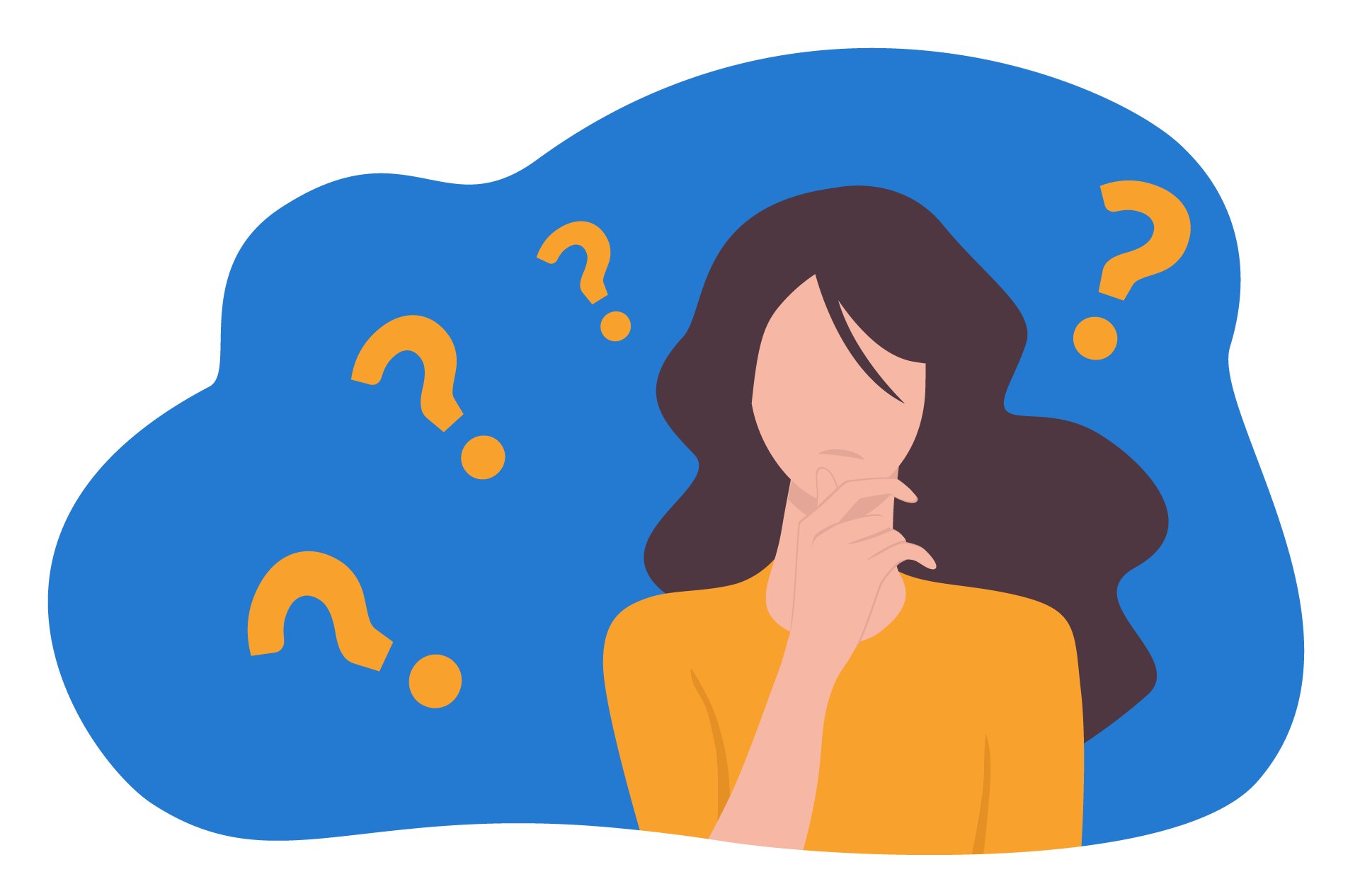How do we decide what products to review?
An essential part of our Sleep Hero mission is to be fully transparent about the products we test and the reviewing process associated with this.
Every product we've tested proudly displays the "Sleep Hero Tested" seal, so you can rest assured our reviews are honest, accurate, and unbiased.
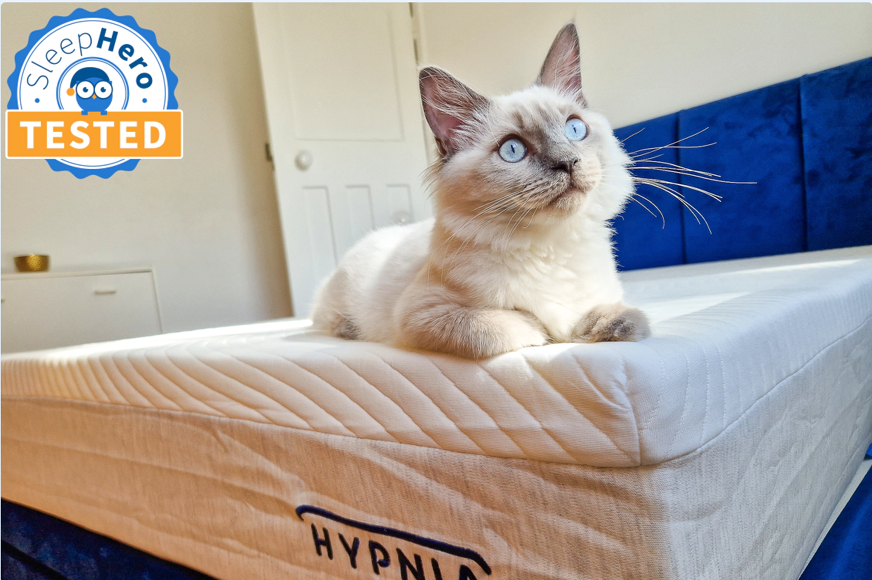

But there are millions of products - including thousands of sleep products - and it's impossible to test every single one of them.
When deciding which products to test, we consider the benefit for our readers and ask ourselves some of the following questions:
- Is the brand either popular or new in the UK market?
- Does the brand deserve more recognition?
- Is the brand making claims that seem too good to be true?
- Is there anything missing from other reviews that we can shed some light on?
- Is this a product we would consider buying ourselves?
Many of the products we receive are gifted via partnerships, but we also purchase products that we deem worth testing.
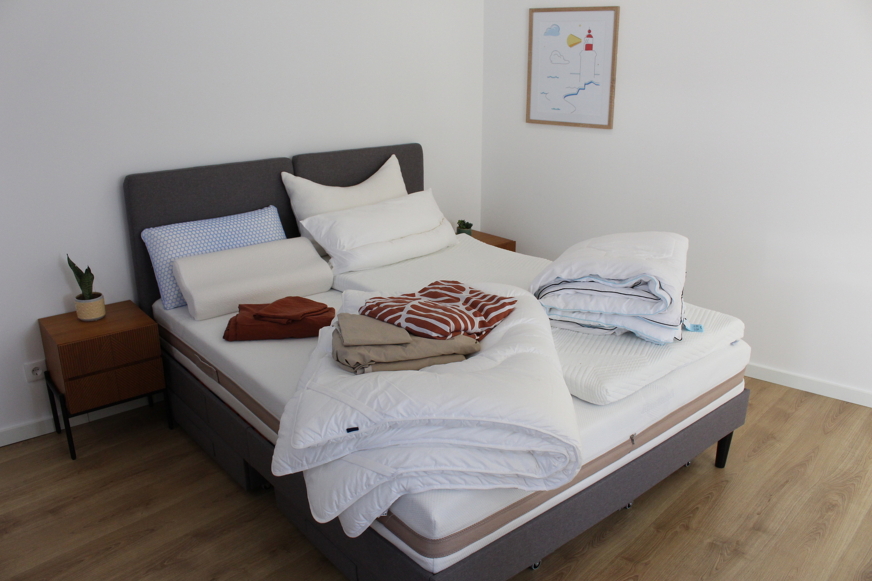
Even if a product is gifted to us, this does not guarantee a positive review - we take our editorial independence very seriously and never publish sponsored content.
Please refer to our Editorial Policy for more information on this.
Where do we test our products?
We believe in a two-pronged approach to testing products:
- We test products at the Airi SleepLab, our state-of-the-art testing facility located in Portugal, where we have access to all the latest tools and technologies in product testing.
- We also test products at home from a consumer perspective to give a more "real" feel of how you may encounter a product.
Testing at the Airi SleepLab gives us the technical and scientific evidence to better evaluate the characteristics of a product.


This is vitally important if we want to accurately measure features such as the firmness of a mattress, the spinal alignment a pillow provides, or the temperature regulation properties of a mattress topper.
But we also believe that you don't necessarily need a robot to tell you if a product is comfortable or high-quality.
By adding at-home testing to the mix, we can evaluate real customer concerns, such as assessing how practical delivery actually is or how a product performs under normal sleeping conditions.
All our testers, regardless of whether testing takes place in the Airi SleepLab or in homes, test products for an extended period of time while continuing their normal daily routines.
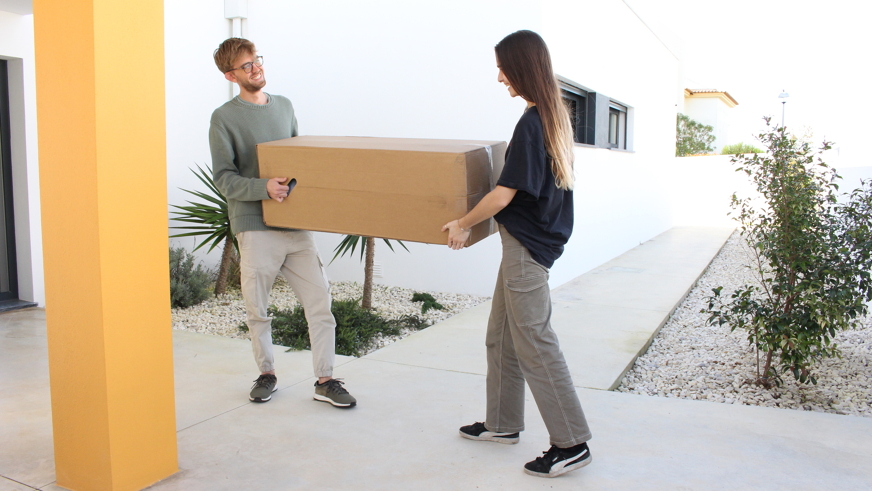
This allows us to assess product particularities that may not be immediately noticeable, such as whether a mattress cooperates when sitting on the edge of the bed in the morning to put our slippers on.
It's also worth keeping in mind that many sleep products feel uncomfortable or unusual initially, as it takes the body a little while to get used to new sensations, and testing for an elongated period of time helps us move beyond these initial stages.
How do we test product performance?
We take our testing process very seriously, monitoring the entire experience and leaving no stone unturned.
There are a variety of factors we consider when testing a product, including delivery, packaging, practicality, and price, but the most important is the comfort and suitability of the actual product.
Of course, the actual testing will differ slightly depending on the product, so let's take a closer look at the most common sleep products and how we test them.
Testing mattresses
A mattress forms the base of your bed set-up, and very often influences every other sleep product you have.
That's why our mattress-testing process is the most fleshed out and will always consider the following:
- The comfort and pressure relief of the mattress
- The firmness and support provided
- How suitable the mattress is for different sleeping positions
- How suitable the mattress is for different weights
- If it offers good temperature regulation throughout the night
- Whether it has high or low motion transfer
We understand that many of these factors are subjective, so we rely on a number of tools to assess mattress characteristics more accurately and, if possible, rely on at least two people with different personal preferences and requirements to test a mattress.
This allows us to make a fair, overall assessment.
Let's take a closer look at what we judge a mattress on.
Mattress comfort and firmness
What matters most when considering a mattress is how well you sleep.
Of course, actually sleeping on the mattress is the best way to test comfort, and we work with a variety of testers who can tell us how comfortable they think the mattress is, reflecting average consumer concerns.

Comfort is subjective, though, so we also rely on objective data to be able to translate comfort into something that may be useful to our readers.
To do this, we look more closely at the comfort and firmness of a mattress.
Comfort and pressure relief tests:
- Subjective feel test: We engage in everyday actions, such as sitting and sleeping on the mattress, to assess the mattress's support and comfort levels. We use the product for a minimum of seven days.
- Objective sensor test: Using a sensing mat, we can capture pressure points across different sleeping positions to ensure the mattress hugs the sleeper well.
Firmness and support tests:
- Subjective sinkage tests: We measure how deeply a person sinks into the materials of the mattress in a variety of different positions (standing directly in the centre of the mattress, sitting and kneeling on the side of the mattress, and lying down in various sleeping positions). This allows us to more adequately determine how supportive a mattress will be and how comfortable you're likely to find it.
- Objective technical test: Since feel tests and sinkage tests can be influenced by a person's body weight and size, we also work with a durometer to gain scientific insight into the precise firmness of the materials used.
- Objective laser test: In order to assess optimal spinal alignment, a vital part of mattress firmness, we also work with a line laser to establish the straightness or curvature of the spine.
Using the above, we'll then rate the mattress on our Sleep Hero firmness scale, where 1 is the softest and 10 is the firmest.
Matching comfort with a good level of support and the right firmness is vital when purchasing a mattress since a good mattress, regardless of firmness, will ensure that you sleep with the correct spinal alignment, regardless of your sleeping position.
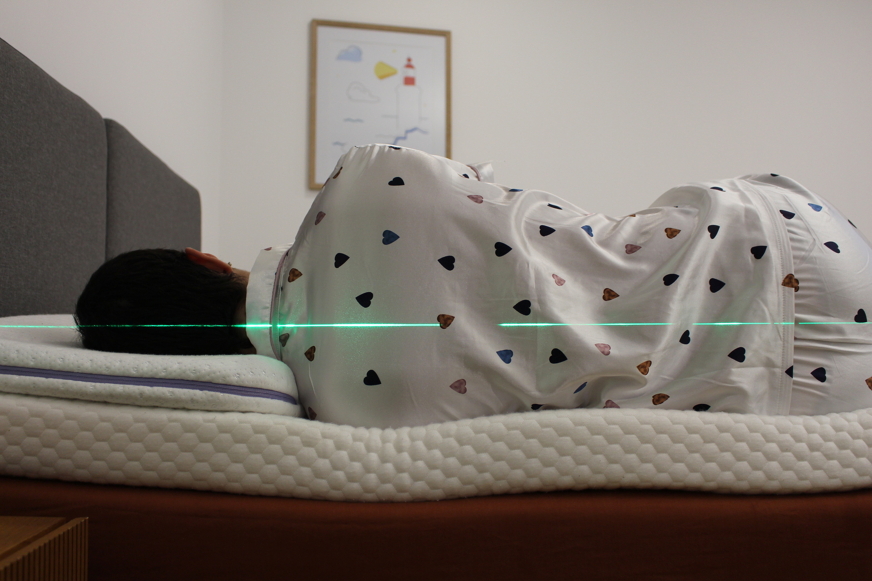
It's worth remembering that body weight, build, and preferred sleeping position will affect which level of firmness would be better for you, as lighter-weight sleepers and side sleepers generally do well on softer mattresses, while heavier-weight sleepers, back sleepers, and stomach sleepers generally do better on a firmer mattress.
We make an effort to include details on this in every mattress review we publish.
What is a sensing mat?
A sensing mat allows us to measure pressure points in each sleeping position, and determine how products like mattresses and toppers distribute pressure across the surface.
What is a durometer?
A durometer measures the hardness of materials on almost any uniform surface, from mattresses and pillows to toppers and more, in scales ranging from 0 to 100, where 0 is no hardness at all (like the air) and 100 is the hardest (like a floor).
Our current scale for mattresses and toppers, measuring the firmness of the product with the cover, is established as follows:
- Up to 20 is soft
- From 20 to 30 is medium-firm
- Above 30 is firm
This allows us to better classify products as soft, medium-firm, and firm.
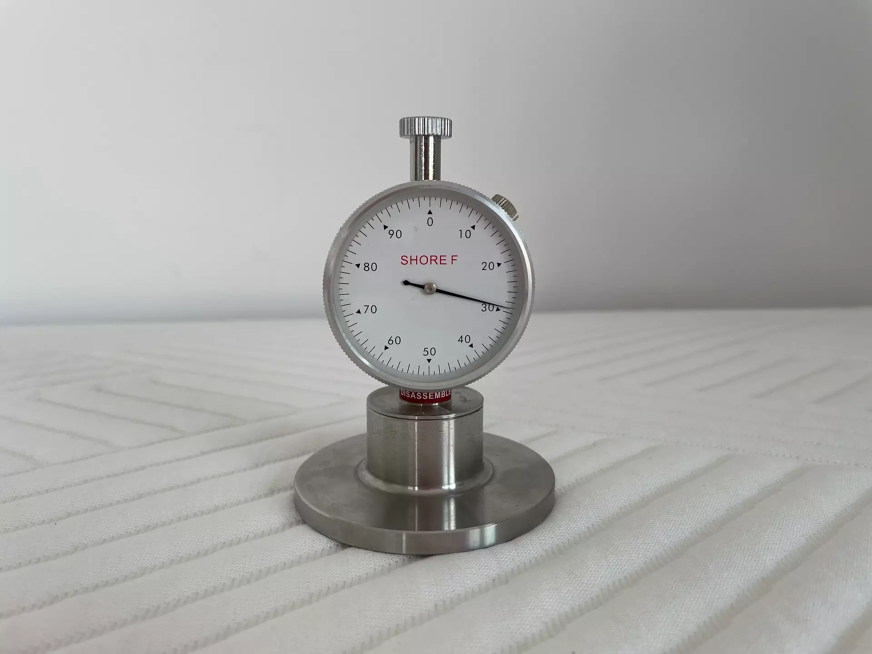
What is a line laser?
A line laser is a tool that projects a beam of light, typically 180 degrees, both horizontally and vertically, allowing us to establish a horizontal or vertical plane.
We use it to assess whether or not spinal alignment is correct in different sleeping positions when we test mattresses, toppers, and pillows.
Mattress edge support
A mattress's edge support may be slightly related to its overall firmness, but this isn't always the case, as some mattresses feature edge support enhancements, while others dwindle in firmness towards the edges.
Edge support is the overall support you'll receive when lying or sitting at the very end (or edge) of your bed.
While this isn't important to all sleepers, edge support can be a deciding factor when purchasing a mattress for a few key reasons:
- If you share your bed with a partner and want to make use of the mattress's full width.
- If you enjoy using your bed for other activities, like reading, writing, or painting your nails.
- If you often sit on the side of your bed before going to bed or getting up in the morning.
The best way to test edge support is to exert pressure on the edge of the mattress to see how supportive it is, and the sinkage tests we do as part of the firmness evaluation help us assess this.
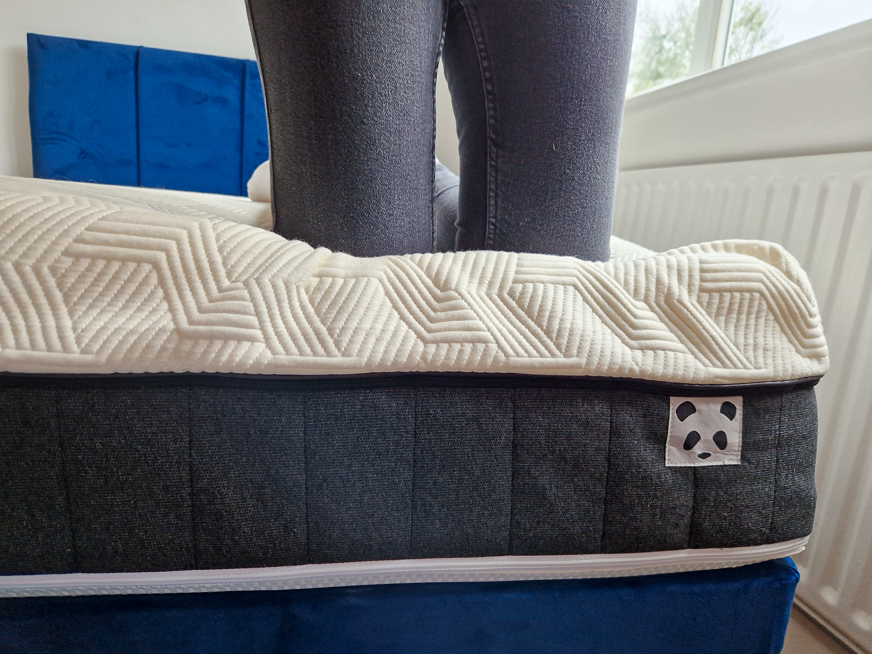

We can also test edge support during the night by moving right up to the side of the bed when sleeping.
Most mattresses will sink in slightly when sitting and kneeling on the edge, but some will squash down completely, which denotes very low edge support and can prove quite uncomfortable.
Mattress motion isolation
Motion isolation (or, by inverse, motion transfer) indicates how effectively a mattress absorbs movements.
This is particularly important for restless sleepers or couples sharing a bed.
A mattress with low motion isolation (or high motion transfer) carries movement every time you or your partner moves, negatively affecting your rest.
In contrast, a mattress with high motion isolation (or low motion transfer) effectively absorbs motion, keeping you and your partner still and more comfortable.
Ideally, you'd want a mattress with low motion transfer, but, in some cases, you'd also want a mattress with a bit of bounce (such as when choosing the perfect mattress for sex).
We test motion transfer in several ways:
- Subjective real-life scenarios: By sharing a bed with a partner or pet, we can assess how easily we are disturbed if the other party moves. During our tests, we often place a glass of water on the other side of the bed to record results.
- Objective fun tests: We run a set of "more fun" experiments, like placing a glass of water on the mattress and creating some movement at the other end (see video above).
- Objective scientific tests: We use a motion reader to measure motion transfer when moving around or getting in or out of bed.
Using more scientific testing methods, such as the motion reader, we'd get results that look something like this:

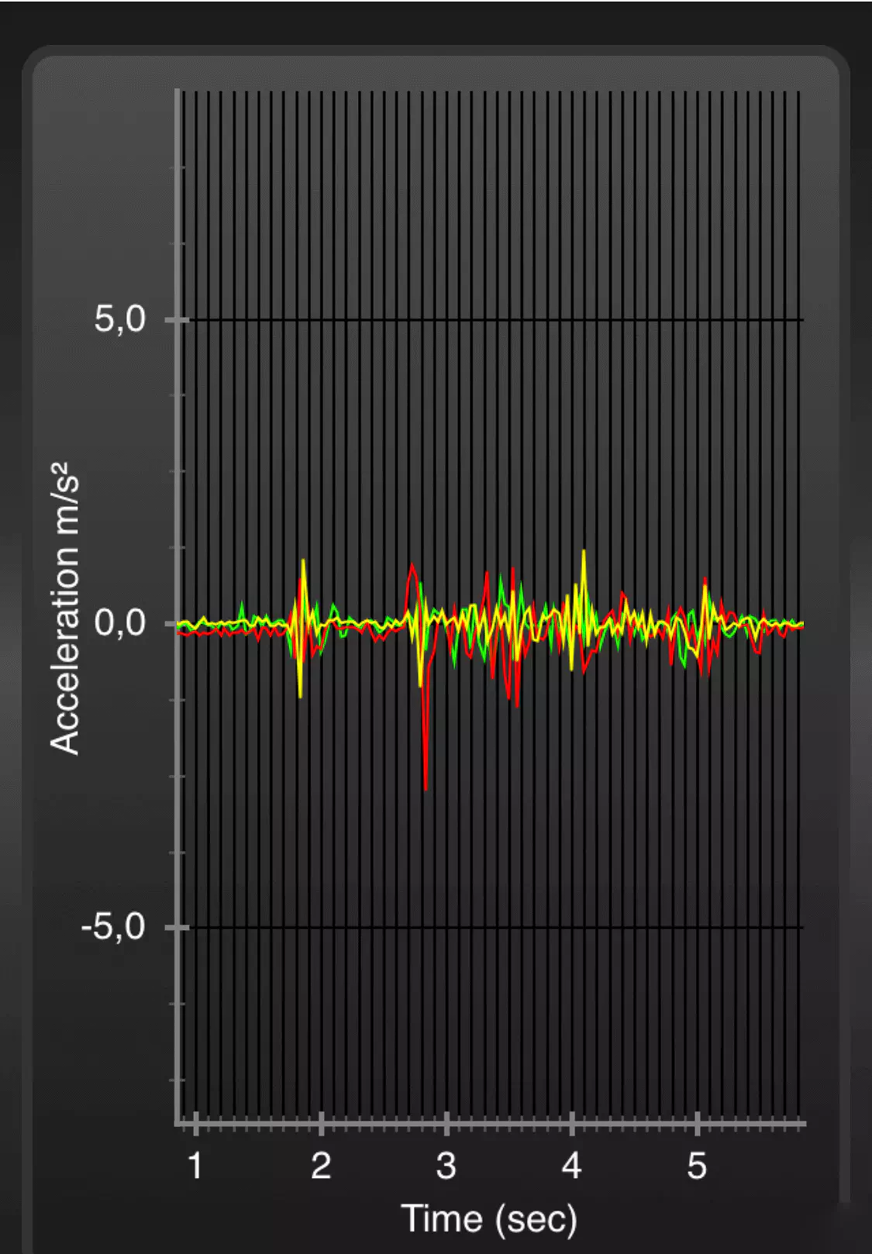
The data is very clear about when motion is high.
The above figures actually illustrate the difference between memory foam mattresses (left), which are known for their exceptionally low motion transfer, and pocket-sprung hybrid mattresses (right), which have a bit more bounce.
What is a motion reader?
A motion reader is an app that captures and measures the motion or movement transfer in a mattress when one sleeper moves.
This helps us to determine whether or not the other person will feel the movement and will be disturbed while sleeping.
Mattress temperature regulation
Temperature is subjective since our bodies function differently, with some people sleeping hotter and others feeling cold much more easily.
But different mattress materials also regulate temperature differently and affect how warm you feel at night.
The below illustration gives a quick overview of this:
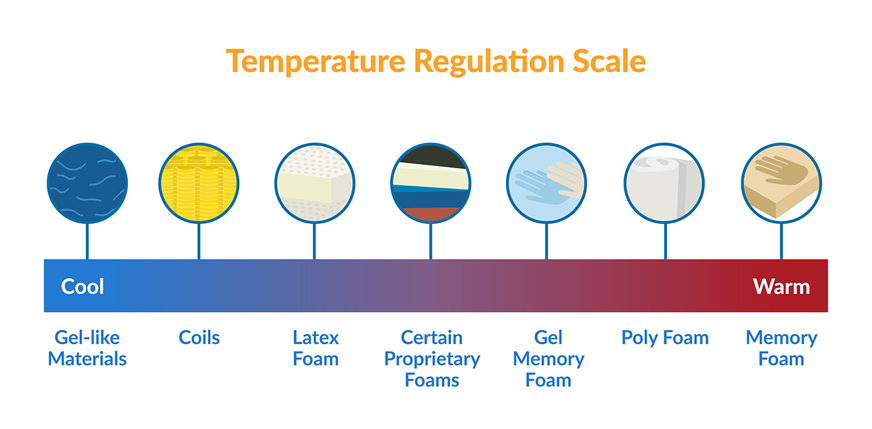
But this does not mean you'll always feel hot and clammy on a memory foam mattress, even though memory foam retains the most heat.
The best mattresses are designed to regulate temperature effectively, carrying away excess heat and moisture and keeping you cooler and more comfortable.
When testing the temperature and the temperature regulation properties of a mattress, we consider data from the following:
- Subjective feel tests: We rely on accounts from different test sleepers (both male and female) to see how hot they felt on the mattress.
- Objective heat map tests: We also rely on heat maps in our testing, using a temperature gun, to get a better idea of how well a mattress retains or dissipates heat.
Look at the below heat maps as an example:
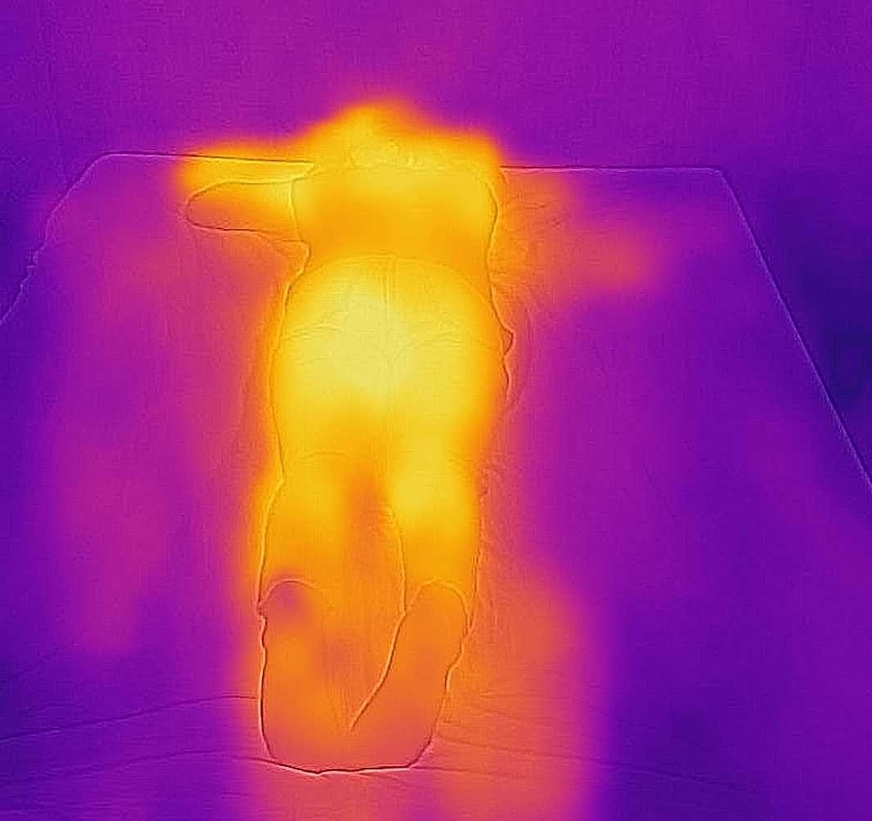
With the image on the left, the mattress retained heat where the sleeper lay but stayed temperature neutral elsewhere, ensuring a cooler and more comfortable sleep.
But the mattress on the right heated up significantly more all over, meaning you're in for a night of warmer sleep.
This isn't terrible if you tend to feel cold at night, but it may be a dealbreaker if you're a hot sleeper.
Incidentally, both of the above heat maps depict memory foam mattresses.
What is a temperature gun?
A temperature gun or laser thermometer is a device with the ability to measure temperature from a distance.
To test using the temperature gun, we'll record the temperature of the mattress/product without having used it and then lie down on the product for five minutes. We record the temperature immediately after lying down, and then again five minutes later.
This helps us to measure how fast mattresses, toppers, or pillows release heat and cool down.
Assessing this is a good indication of whether or not a product offers good temperature regulation.
Testing pillows
We've tested some of the best pillows in the UK, but also dive into the more unusual items like bath pillows, body pillows, and V pillows.
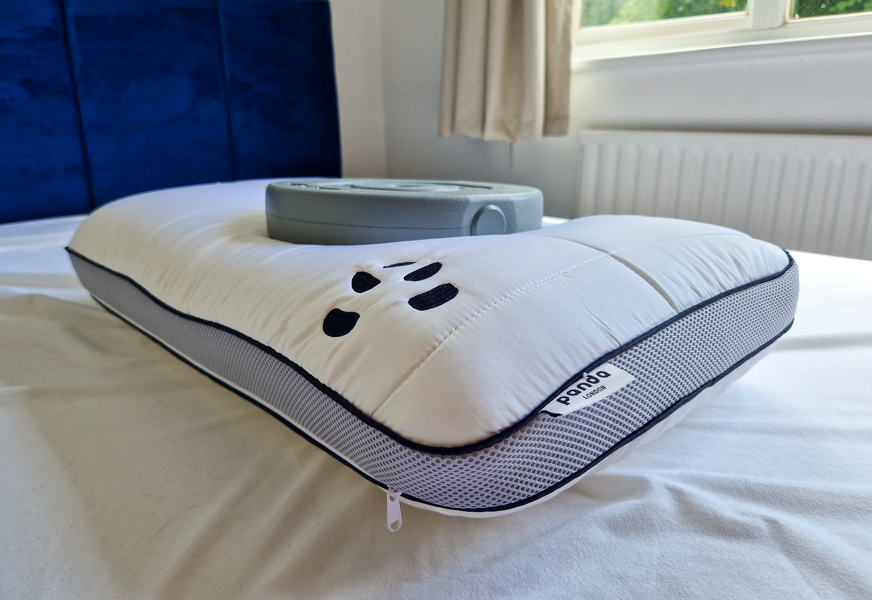
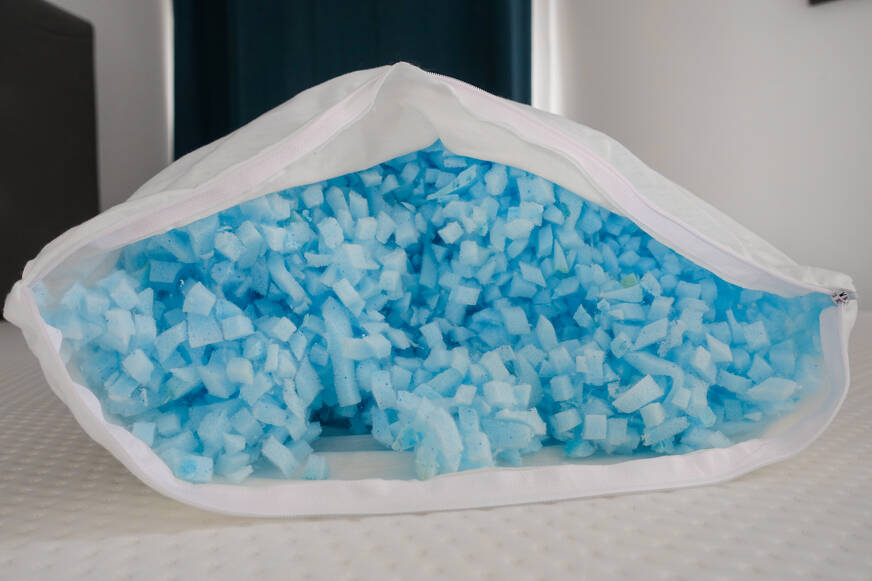
Just like mattresses, the experience of a pillow is subjective and depends on the individual.
That said, there are still a few key factors we consider.
- Loft: The height of the pillow you need depends on your build and preferred sleep position.
- Firmness and support: The firmness and support a pillow provides is influenced by the materials used. We measure firmness using the kettlebell test.
- Material: Pillow material affects the overall loft and feel of the pillow but is also important to consider for allergy sufferers.
- Adjustability: An adjustable pillow has removable layers or shredded foam so that it can be adjusted to your ideal firmness and height.
It's important to remember that the feel of a pillow can be influenced by the mattress you use, and you may need a higher/firmer or lower/softer pillow, depending on how soft or firm your mattress is.
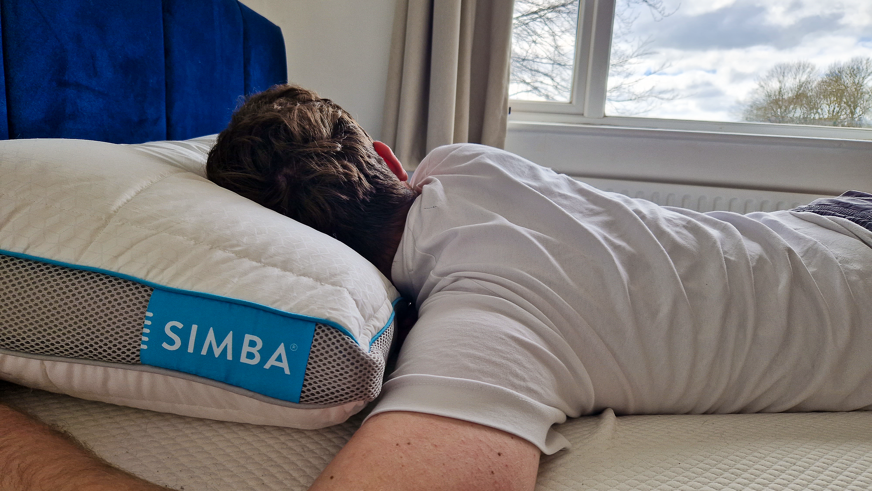
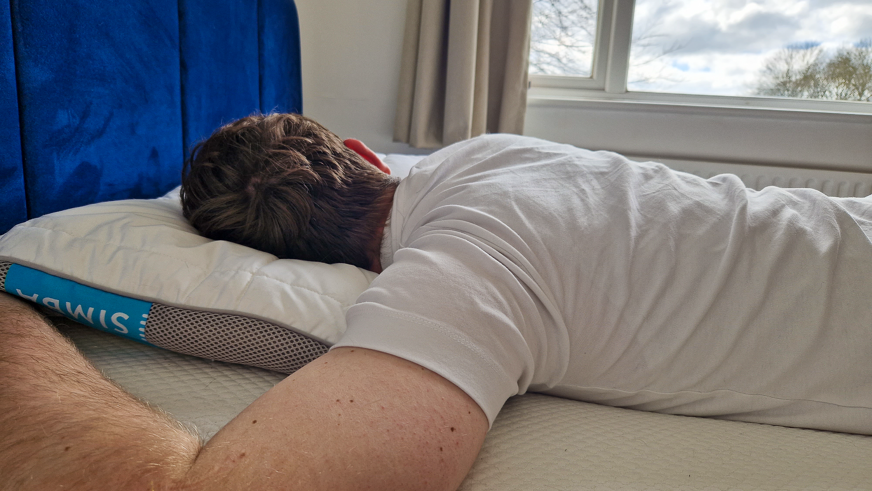
Other questions we ask ourselves when testing pillows:
- How is the pillow delivered?
- Does the pillow come with a removable and/or washable cover?
- Does the pillow hold its shape over time?
- Does the pillow sleep cool?
- In what sizes is the pillow available?
All these factors influence your sleep comfort or the overall practicality of the pillow.
What is the kettlebell test?
A kettlebell is a large cast-iron ball-shaped weight with a single handle. We use a 4 kg kettlebell for our tests.
The human head weighs around 5 kg, so, with this test, we can simulate how much the head of a person will sink into a pillow and whether or not it offers good or bad support.
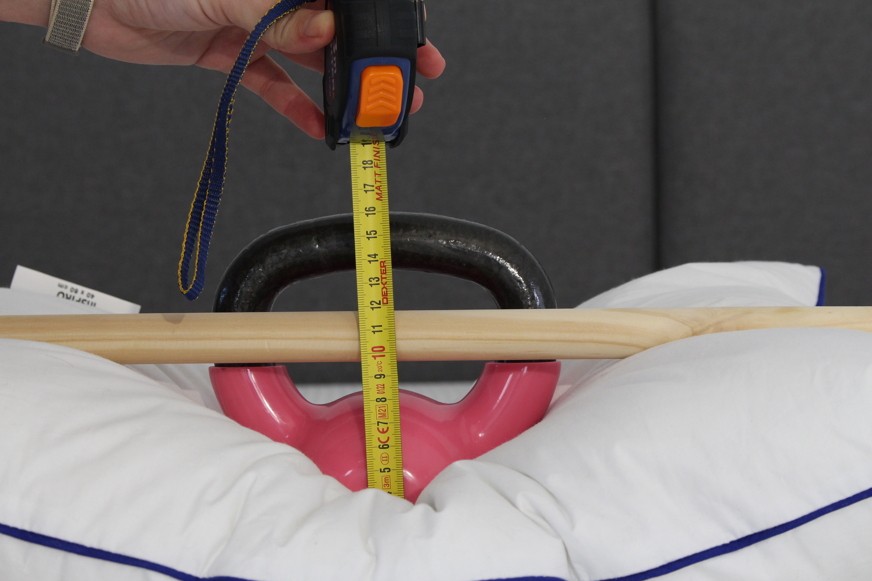
Testing duvets
We also test some of the best duvets in the UK.
Contrary to what you may think, a duvet can make or break your sleep experience, and is also one of the most significant factors when considering the overall sleeping temperature.
In addition to standard delivery and quality questions, we also consider duvet materials, tog size, comfort, and washability.
As an example, take a look at the below image:
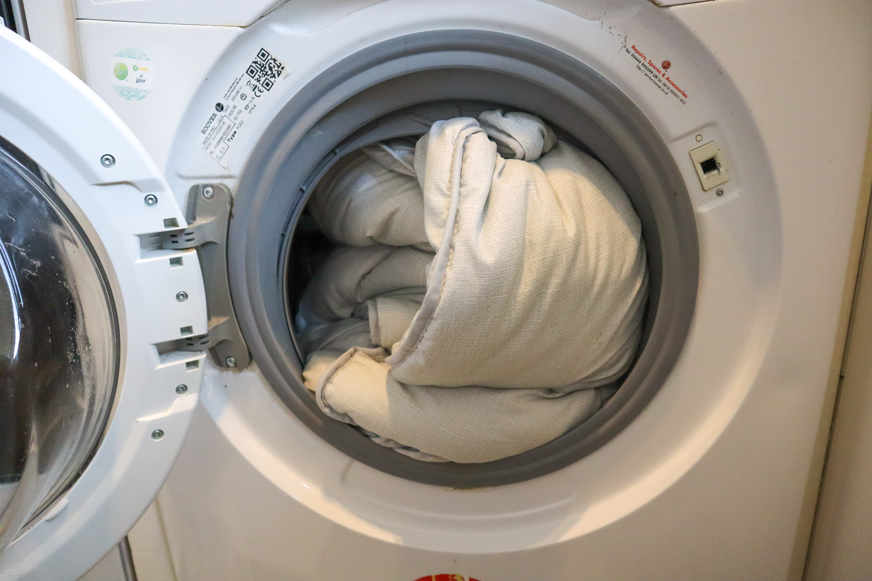
Even though this coverless duvet was washable, it didn't actually fit into our washing machine, and we had to take it to a laundrette.
By going through this entire process and documenting it in our review, we can prevent readers from buying a duvet that's unsuitable for their lifestyle.
Testing mattress protectors
A mattress protector safeguards your mattress against stains, spills, moisture, and bacteria - and it's a great way to increase mattress longevity, keeping it looking fresh and clean for longer.
There are a few things we consider when testing a mattress protector.
- Is the mattress protector made from quality materials that are soft and breathable?
- Is it easy to put on the bed?
- What's it like to sleep on, and does it change sleep comfort negatively?
- Does it actually protect the mattress?
We consider how easily the protector wrinkles, if it makes any noise (some feel and sound very plasticky), and if it fits on easily like a fitted sheet.
To test the mattress protector's waterproof claims, we recreate those "accident" situations by spilling water over the mattress.
Look at the results below:
Luckily, the mattress protector adequately safeguarded the mattress, and none of the water seeped through.
Mattress protectors may seem irrelevant, but we firmly believe that investing in a good waterproof mattress protector should be a non-negotiable.
Testing mattress toppers
A mattress topper can completely change the way a mattress feels - and since it affects the sleeping surface so much, testing toppers is similar to testing mattresses.
But keep in mind that the mattress underneath the topper greatly affects the topper, so it's often impossible to draw generic conclusions.
In addition to the more standard questions, we also consider the following:
- What materials is the topper made from?
- Is the topper soft and squishy or slightly firmer?
- What sleeping position is it best suited for?
- Is it thick enough to make enough of a difference?
- Does it sleep hot or cool?
- Does it come with a removable and/or washable cover?
- Does it have straps to attach it to the mattress?
- Can it be stored away easily?
Unlike a mattress protector, duvet, and pillow, a mattress topper isn't always required.
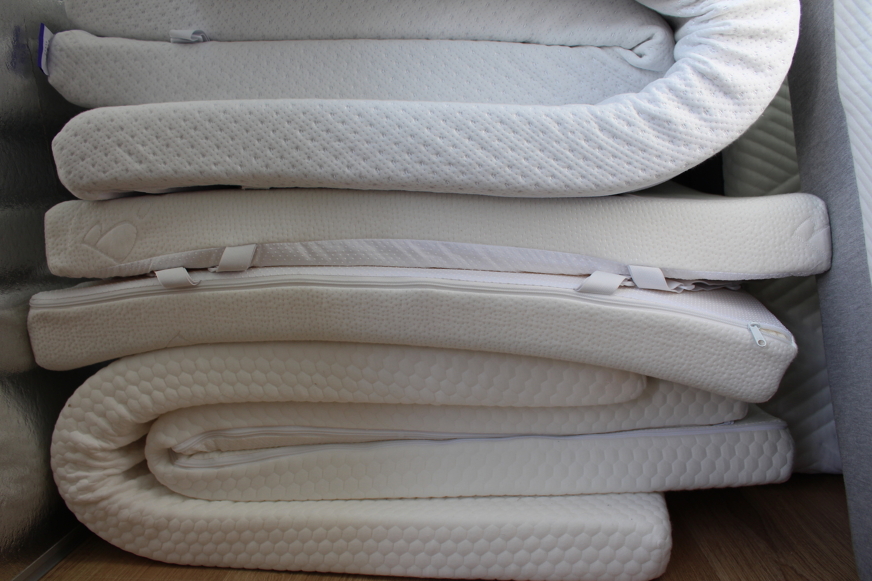
We always pay attention to whether or not this is a product you should actually invest in.
Testing beds and bed frames
No bed setup is complete without a good bed frame.
While most people choose a bed according to the overall design, there are also some practical factors to consider.
When testing bed frames, some of the things we look at include:
- How economical the frame is for smaller bedrooms
- Whether or not the frame offers a practical storage solution
- If the materials are durable, stain-resistant, and/or easy to clean
- How easy it is to put together
- How easy it is to take apart and transport if needed
We also consider how sturdy the frame is and what type of mattress it is suitable for.

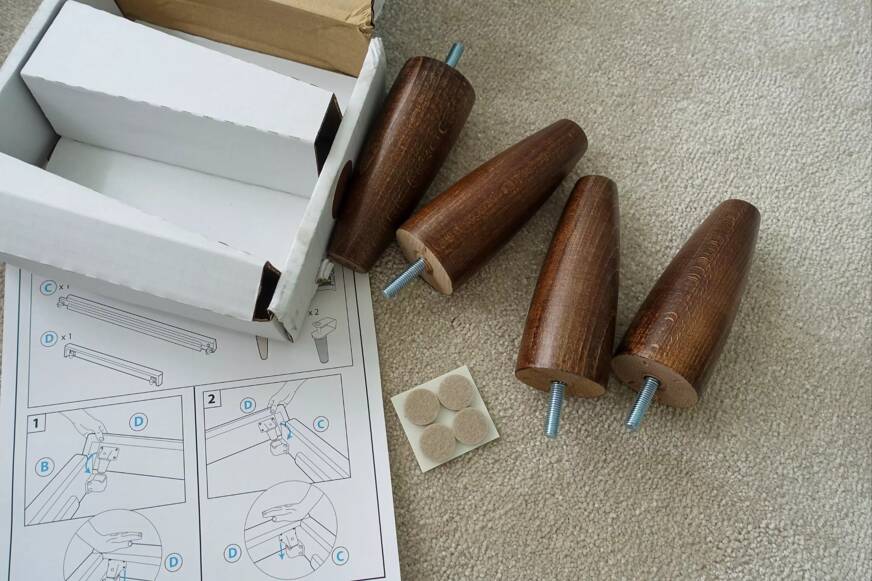
Unfortunately, we've had some negative bed frame experiences, so there definitely are some beds that are better than others!
Testing other sleep products
We've covered some of the most common sleep products above, but we also test many other sleep accessories and gadgets, including:
We're continuously expanding our range of product tests to offer you the most informative reviews.
What other factors do we consider?
Tests and analytical data are undoubtedly important to us - but they're only relevant to our research once we've understood the needs of our readers.
We're focused on consumer reviews, after all, and want to highlight everything that's important to the customer journey.
When testing, we consider what other unique factors may contribute to the overall user experience.
These would include some of the following:
Assessing delivery
Most online brands promise a quick and easy delivery service.
But this isn't always the case, so we start by considering the delivery and returns processes and everything associated with unpacking the product.
A problematic delivery process is not always the fault of the brand (many outsource the process), but we think it's important to flag any issues we experience during delivery.
We consider some of the following:
- How long does delivery take?
- How much communication do we get during the delivery process, and is it effective?
- Is the product delivered to the door or brought into our room of choice?
- Is the product (or box) delivered damaged or in good condition?
- For mattresses, how is it packaged (i.e. bed-in-a-box product or delivered flat)?
- What packaging is included, and is it recyclable?
- How much packaging is used?
- Are there any additional niceties, like thank you notes or a gift?
- Is the product easy to unbox?
- Is there off-gassing, and if so, how long does it take for the smell to disappear?
- If applicable, is there an old mattress removal service?
We may focus on other aspects of the delivery process as well, but this is often product- or brand-specific.
We also take you through the step-by-step unboxing process with images and/or videos to document how easy (or difficult) it is to unpack the product.
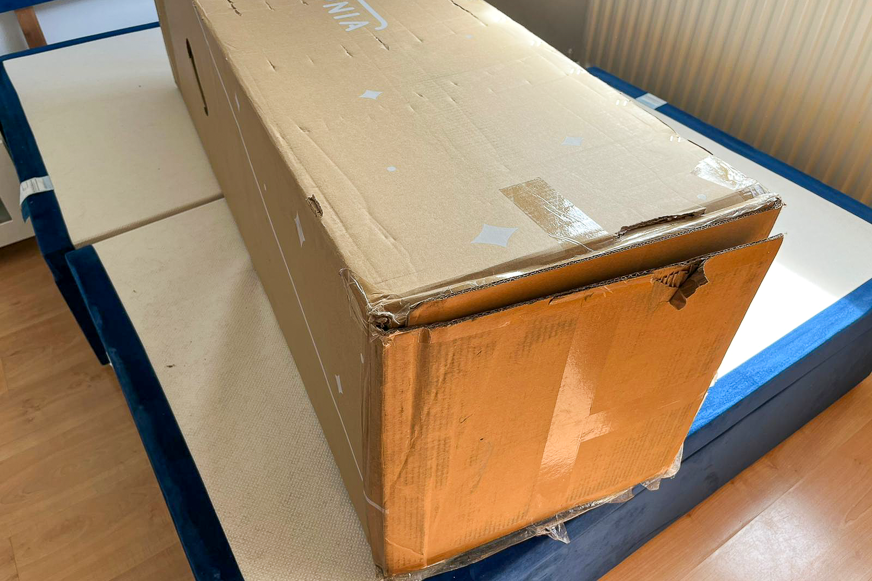
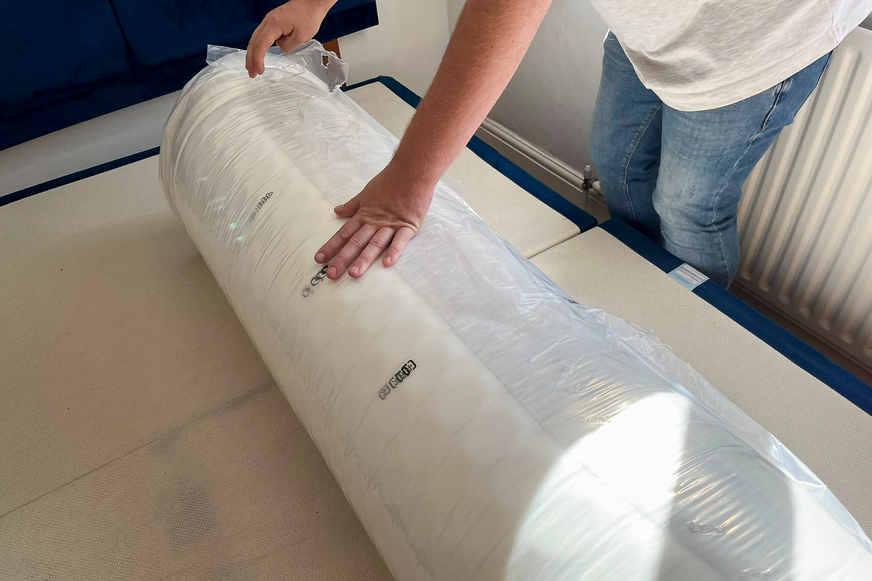
Some readers value the importance of eco-friendly materials, whilst others prioritise a seamless and stress-free delivery process.
Therefore, we try to observe the entire delivery process from every possible angle.
As part of the delivery process, we'll also take a closer look at the returns process.
- Does the brand offer a risk-free trial period?
- Does the brand offer full refunds or exchanges only?
- Are returns easy to set up?
- Does the customer incur any costs?
- Does the brand pick up the product?
While many brands now offer trial periods, the details of the returns process can affect how comfortable this process is for consumers.
Determining practicality
Having a super comfortable sleep product is pointless if you don't use it, which is why practicality and convenience are so important.
It's like buying the perfect pair of trousers, only to discover that the item can only be dry-cleaned using particular products.
Would you wear that pair of trousers daily?
Probably not.
We all lead busy lives, so, ultimately, we want a product that will be easy to take care of - and one that lasts a long time.
That's why we look at convenience factors such as the following:
- Whether the product has a removable and/or machine-washable cover
- How easy the product cover is to wash, dry, and put back on
- How to clean the product itself, if possible
- Whether a mattress needs to be flipped and how to turn it
- How difficult it is to move the mattress (i.e. if it comes with side handles)
- How heavy the mattress is
- How easy it is to store the product
These are factors you wouldn't necessarily think of at first - but which may become important further down the line.
We can investigate these aspects during testing - and may even come across other factors we'd not initially considered.
When you spend a lot of money on a product, you want to take good care of it, but you never want this care to create too much of an interruption.
This ensures that even if the product passes the initial comfort test, it will also be a product that suits your busy lifestyle.
Focusing on durability
You wouldn't want to buy a product that doesn't last - especially if it's a significant purchase, like a bed or mattress.
The average lifespan of a high-quality mattress is 8 - 10 years.
While we don't run our mattress tests for that long, we consider the average durability of a mattress depending on the quality of materials used in the construction of the product.
Mattresses with high-quality materials (and a good guarantee period) should be expected to last that long, while mattresses made of lower-quality materials are likely to wear out more quickly.
The same would apply to other sleep products, of course.
Sometimes, we've even encountered products that have already failed during our testing period!
This is often due to manufacturing faults, but luckily, it gives us a good opportunity to test how brands deal with those issues as well.
Considering pricing
Of course, we always ask ourselves whether or not a product is good value for money.
There's often no easy answer to that, as everyone's budget varies, but we do consider a few things:
- The overall quality of the materials, including foam density and spring count
- The sustainability of the product
- Whether or not the product comes with a sleep trial
- The length of the warranty period
We've found that, very often, products that seem expensive actually work out cheaper in the long term - and thus offer better value for money.
We also consider what kind of discounts are available to customers throughout the year and whether or not the brand offers good deals compared to others.
Finally, we consider whether or not the brand offers flexible payment options, such as Klarna pay, interest-free credit, etc.
Looking at available sizes
Size may not seem like a huge concern, but we've actually often found problems when it comes to the sizing of sleep products.
This doesn't only apply to mattresses - beds, sofa beds, toppers, pillows, and bedding can all be affected by sizing!
UK mattress sizes include single, small double, double, king size and super king, and you'd expect bedding and other products to match - but you won't always find the product you need in the size you want.
Sometimes, we'll encounter brands that only focus on EU sizes, which are slightly different to the UK standard sizes.
Other times, we'll see that a certain mattress is only available in larger sizes.
These factors influence how convenient a brand will be for our UK readers, so it's always something we consider in our testing and our reviews.
Understanding sleep trials
We've briefly touched on sleep trials when we spoke about the delivery and returns processes, but it's such an important point that it deserves its own section.
This mostly refers to mattresses, but sometimes you'll find sleep trials on other products.
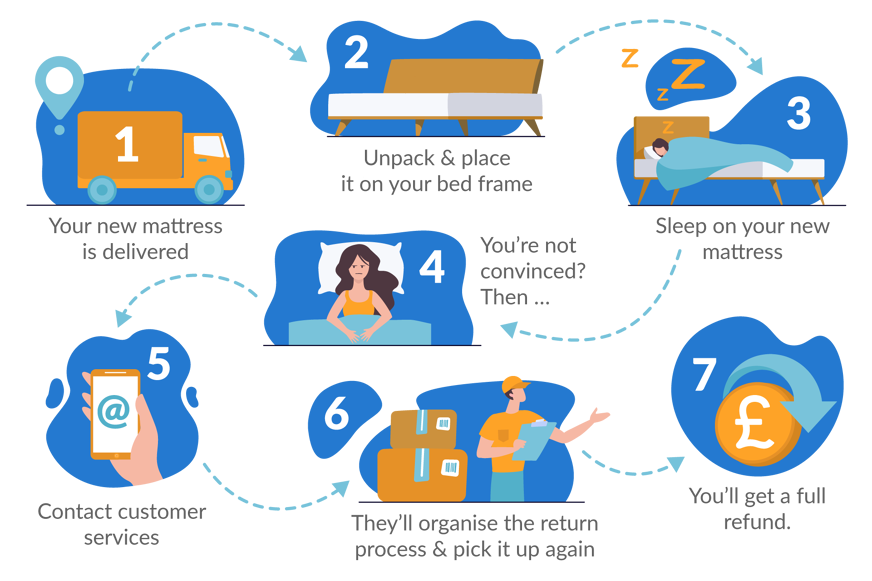
Most of our recommended bed-in-a-box mattress brands offer risk-free trial periods.
This means you get to test a mattress in the comfort of your own home to see if it’s right for you and return it for a full refund if you're not satisfied.
But not all brands have amazing, risk-free trials.
We consider some of the following:
- How long is the trial period?
- Is the returns process complicated?
- Does the brand cover the cost of the return?
- Does the brand pick up the product from your home?
- Are you eligible for a full refund, or does the brand only offer product exchanges or gift vouchers?
- Are there any other costs involved for the customer?
High-quality brands should offer a minimum of a 30-night sleep trial with a full refund if unsatisfied.
Focusing on guarantees
A guarantee works a bit differently from a sleep trial.
A guarantee or warranty protects you from manufacturing faults such as seams coming apart or your new mattress dipping.
While we often don't test a product long enough to make use of the guarantee, we have had some negative experiences where the warranty came into play.
For example:
- We've tested some products where the zipper or handle broke during testing.
- We've tested a few mattresses that didn't expand to their full size (beyond the 2 cm leeway most brands allow).
- We've even received faulty products with rips, tears, or incorrect measurements.
If this happens, it gives us a golden opportunity to test how brands deal with warranty claims.
But if all goes well during testing, we simply consider how long the guarantee period is and what faults are covered and then compare this to what other brands or retailers offer.
A good mattress guarantee should be at least 7 years or more (as this is the average lifespan for a mattress).
Many other sleep products don't come with guarantees, but good products usually do offer a 1- to 3-year guarantee.
Do we look at external awards?
Sometimes, we'll also look at how other organisations have rated a product, so it's not unusual for us to consider external awards.
However, we always make sure to consider how trustworthy other reviews or awards are.
Some questions we ask ourselves when looking at other reviews include:
- Has the product been thoroughly tested?
- Are the claims backed up by data, or is it just someone's opinion?
- Does the organisation or site discuss the disadvantages of the product?
- Are all concerns and questions answered?
- Are alternatives provided, or is only one product or brand recommended?
Most mattress review sites operate with affiliate partners, but this should never affect editorial independence.
That said, some organisations or sites feature "reviews" written by brands or even accept paid-for rankings - this is not something we endorse.
So, keeping that in mind, which are the most common awards and certifications we'd look at?
Which? Best Buy
Which? is the UK’s largest consumer association, and they test thousands of products alongside mattresses, including car seats, washing machines, and smartphones.
These products are thoroughly tested in laboratories where the mattresses are bashed and rolled over with advanced machinery.
Which? is an independent organisation, and we can rely on the fact that their awards will be unbiased.
Product of the Year
Product of the Year is the UK’s largest survey for products and has been running for almost two decades.
The product in question must have launched within the year to be eligible for the Product of the Year award.
Journalists and industry experts will first assess the product to see if it meets the required standards.
If the product is selected, it will go through to the voting stage, where over 10,000 shoppers will decide on a winner.
This ensures that Product of the Year awards reflect general consumer consensus.
Good Housekeeping awards
Good Housekeeping has tested home products for almost 100 years, and some of their awards include the likes of Good Housekeeping Institute and Good Housekeeping Getting Greener.
They have an 18,000-square-foot testing facility and a team of engineers, scientists, data analysts, and researchers who thoroughly test contending products.
They also send out items to select readers to see how well a product performs with various consumers.
This helps to provide a broad range of results of user experience, and we know we can generally rely on Good Housekeeping results.
Other awards
Other independent journalist awards include T3, Mattress Guide, Wired, Expert Reviews, The Independent, and Ideal Homes.
Each review site will have its own standards for distributing awards, but we'll look at any other awards with a more cynical eye to establish authenticity.
Do we consider product certifications?
Certifications work a little differently from awards, as they typically determine whether the products are good for you and the environment.
We always consider whether a product carries certain certifications.
While most sleep products are not organic, many brands pay attention to the quality of materials used.

Many products, for example, carry the OEKO-TEX-Standard-100 [1]or the CertiPUR-US [2] certifications.
These certifications guarantee that the materials are free from harmful chemicals and toxic substances.
We may also look at the GOTS [3] (Global Organic Textile Standard) and GOLS [4] (Global Organic Latex Standard) certifications if we're considering organic or latex-based products.
The UK also has strict safety requirements, and all mattresses need to be fire-retardant and comply with the BS 7177 regulation.
What happens with tested products?
At Sleep Hero, we're committed to making a meaningful impact - that's why we're proud to share that the products we test at the Airi SleepLab don't just sit on a shelf (or the floor) afterwards.
Instead, they find a new home via our donation programme.
Sleep Hero donates products tested at the Airi SleepLab to the Antonio Luis de Oliveira Foundation [5], a children's and youth home that welcomes 27 children and young people between the ages of 10 and 18.
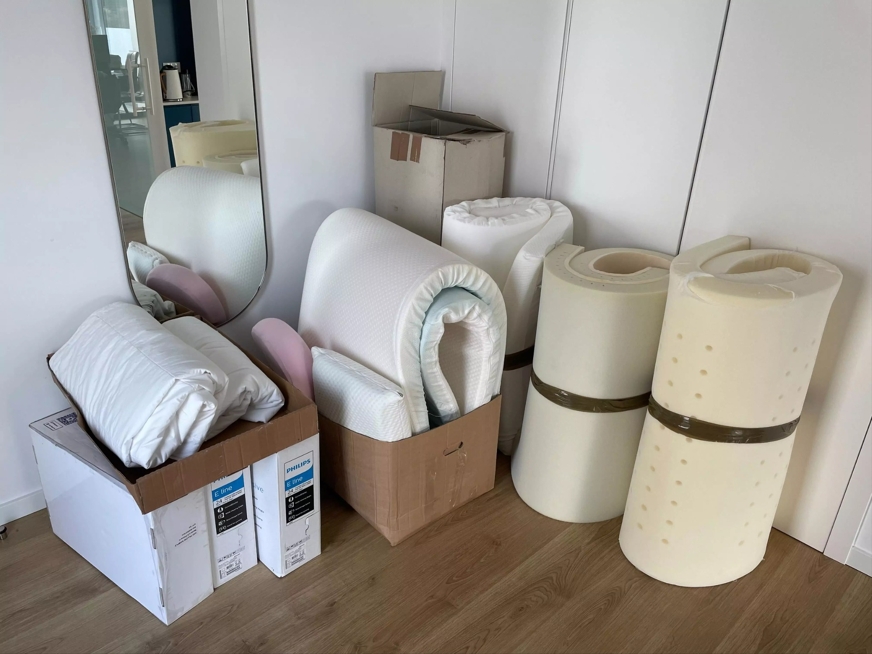
Understanding our research methodology
Testing forms a huge part of what we do, and we are proud of our commitment to authentic, unbiased, and informative reviews.
Our testing processes have been designed to ensure that every product review, sleep tip, and recommendation we make is not only trustworthy but also gives you the power to make informed decisions about your sleep health and the products that support it.
Thank you for trusting us on your journey to better sleep.
Together, we're not just dreaming of a good night's rest - we're making it a reality.
Contact us
Your feedback, questions and concerns help us improve our content and testing methodologies.
If you would like to chat about any of our methods, please reach out to us via email at sleepherouk@team.airi.media or via our Contact page.









